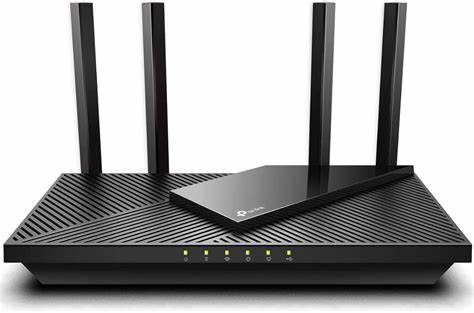Before we discuss wifi 6 and the future of wifi, let us familiarize ourselves with what Wifi is. WiFi is not the short form for “wireless fidelity” as it has massively been misunderstood.
The term is a trademarked IEEE 802.11x term which was coined by a marketing firm to give the technology a catchy name. So next time someone asks you what the full meaning of Wifi is explain to them.
What do You Need To Know About Wifi 6 and the future of Wifi?

Wifi 6 is the latest network protocol that delivers maximum speed and improved performance. The performance is even more noticeable when multiple devices have been connected.
It outperforms its predecessor, the wifi 5. Don’t get me wrong, Wifi 5 is great but Wifi 6 gives you a run for your money.
Another revolutionary thing about wifi 6 is its ability to reduce latency by up to 75%. So it would be the best option if you are a heavy online gamer.
Wi-Fi 6 can support up to 12 streams across the 2.4 and 5 GHz bands, compared to Wi-Fi 5’s limit of 8 in a dual-band configuration.
Wi-Fi 6 also uses 8×8 MU MIMO technology, which allows up to eight devices to connect and use the network simultaneously without interference.
To enjoy the capabilities of Wifi 6 you would need an enabled device and an upgraded router with Wifi 6 Compatibility.
What are Some Key Features and Benefits
You may be asking what the hype with Wifi 6 is. It depends on how heavily you rely on your home router. If you usually connect multiple devices to your router then you would be able to tell the difference.
If your work also demands high transfers of data over your network then Wifi 6 would be an upgrade. But if you are like me who only uses a maximum of 3 devices connected to one router then you may not notice the difference.
This is a breakdown of the features and benefits of Wifi 6
- Increased Speed: Wi-Fi 6 offers speeds up to 9.6 Gbps, a substantial leap from the 3.5 Gbps provided by Wi-Fi 5 (802.11ac). This boost in speed ensures smoother streaming, faster downloads, and a more responsive internet experience.
- Improved Efficiency: One of the standout features of Wi-Fi 6 is Orthogonal Frequency Division Multiple Access (OFDMA). This technology allows multiple devices to share the same channel simultaneously, reducing latency and improving network efficiency. This is particularly beneficial in crowded environments like stadiums, airports, and offices.
- Better Performance in Crowded Areas: Wi-Fi 6 uses Target Wake Time (TWT) to schedule when devices wake up and communicate with the router. This scheduling reduces congestion and extends battery life for devices, making it ideal for smart home environments with numerous connected gadgets.
- Enhanced Security: Wi-Fi 6 incorporates WPA3, the latest security protocol, offering stronger encryption and more robust protection against cyber threats. This ensures that your data remains safe and secure.
- Higher Capacity: With an increased number of devices connected to networks, Wi-Fi 6 addresses this issue by supporting more simultaneous connections. It uses Multiple Input Multiple Output (MU-MIMO) technology, allowing the router to communicate with multiple devices at the same time, enhancing overall network capacity.
Real-World Applications
Wi-Fi 6 is not just about faster speeds; it’s about creating a more reliable and efficient network that can handle the increasing number of devices in our homes and workplaces. From smart homes with dozens of connected devices to businesses that rely on high-speed internet for daily operations, Wi-Fi 6 is poised to revolutionize the way we connect and interact with the digital world.
Looking Ahead: The Future of Wi-Fi and Beyond
As we look to the future, the evolution of Wi-Fi technology will continue to push the boundaries of what’s possible.
Wi-Fi 7, also known as 802.11be, is already in development and promises even greater improvements in speed, efficiency, and capacity. Expected features include enhanced MU-MIMO capabilities, wider channel bandwidths, and further reductions in latency.
Beyond Wi-Fi 7, we can anticipate the integration of advanced technologies such as artificial intelligence (AI) and machine learning (ML) to optimize network performance dynamically. These technologies could predict network congestion and automatically adjust settings to ensure optimal performance for all connected devices.
Read Also: Unleash the Power of Chat GPT: Expert Tips for Crafting Perfect Prompts
Another exciting development is the potential for integrating Wi-Fi with other communication technologies like 5G. This convergence could create seamless connectivity experiences, allowing devices to switch between Wi-Fi and cellular networks without interruption, providing consistent high-speed internet access wherever you are.
Thanks for your Audience and Kindly Share With Others .



